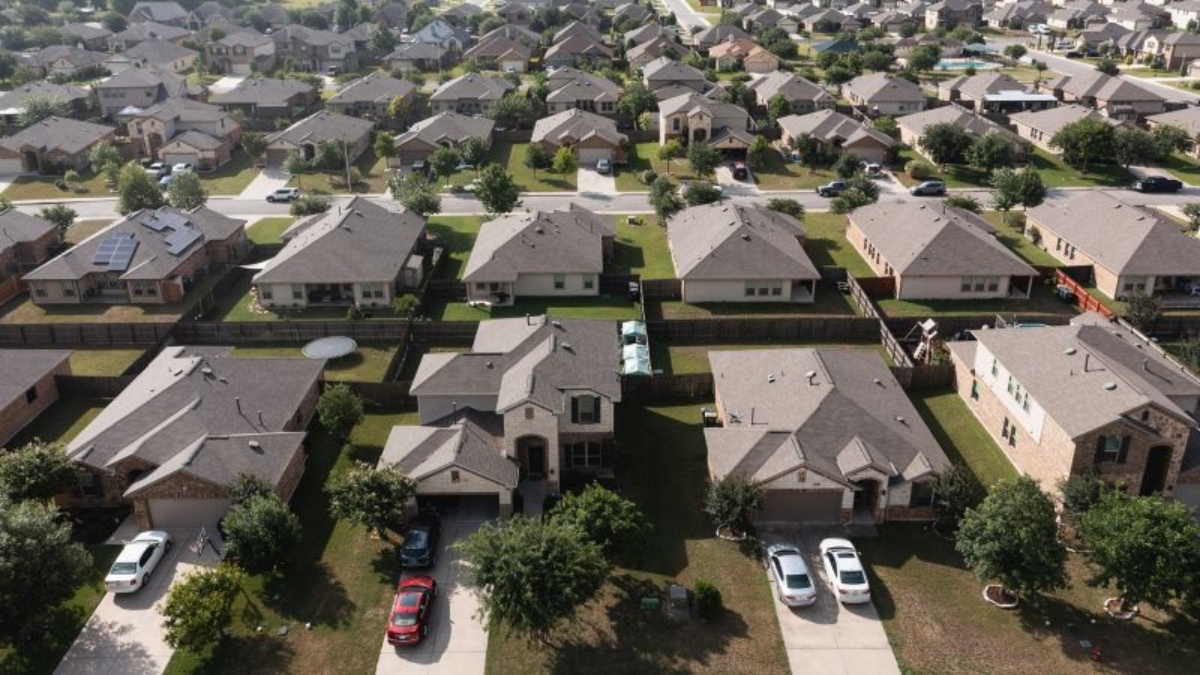(CNN) — Home prices are rising across the country, as a whole. However, when looking at individual markets, some show a decline from a year ago.
Median single-family home prices increased 4% in the fourth quarter from a year earlier to $378,700. Prices were stronger in the Northeast in the last quarter, up 5.3%; followed by the south, with 4.9%; the Midwest, up 4%; and the West, up 2.6%, according to the National Association of Realtors (NAR).
But if you dig down to the market level, it’s clear that prices in some areas are declining from last year. The positive regional numbers mask that about 11% of the individual housing markets tracked by NAR — 20 of 186 cities — experienced declines in home prices in the fourth quarter of last year.
“Some markets may see double-digit price declines, especially some of the more expensive parts of the country, which have also seen weaker employment and more cases of residents moving to other areas,” said Lawrence Yun, chief economist at NAR.
Almost all of the most expensive places to shop are in the West, and half of the top 10 most expensive cities are in California. Several of those places are the ones that lower the prices the most.
San Jose, California, was the most expensive place to buy a home in the United States in the fourth quarter. But that median price of $1,577,500 is actually down 5.8% from a year earlier, and prices are already down 17% from the peak median price of $1,900,000 in the second quarter of last year, according to NAR.
San Francisco had the biggest price drop in the country, year-over-year, last quarter, with a median price of $1,230,000, down 6.1% from a year ago. San Francisco home prices are already down 21% in the fourth quarter from the median peak price of $1,550,000 in the second quarter.
Among the most expensive cities that saw prices fall are Anaheim, California, with a median price of US$1,132,000, 1.6% less than a year ago; Los Angeles, with an average price of US$ 829,100, 1.3% less; and Boulder, Colorado, with a median price of $759,500, down 2.0%.
Other declining price spots saw big price increases during the frenzied home-buying market of recent years. They also tend to be attractive lifestyle destinations that people moved to, as remote work provided more flexibility. These include Boise, Idaho, where prices were down 3.4% from a year earlier, and Austin, Texas, where prices were down 1.3%.
The good news for buyers looking for price relief is that the 4% average price increase in the fourth quarter is less than the 8.6% increase in the third quarter. Additionally, price increases are minor, with far fewer markets experiencing double-digit price increases in the fourth quarter.
“There is a slowdown in house prices and it is welcome, particularly as the typical house price has risen 42% in the last three years,” Yun said, noting that these cost increases far outweigh the increases wages and consumer price inflation since 2019.
A fractured market
For much of the pandemic, home prices across the country moved in only one direction: up. Some hotspots like Austin and Boise saw prices skyrocket. Other areas, particularly in the Midwest, saw prices rise more moderately. However, with mortgage rates near record lows, buyers flocked.
That story changed last year, when mortgage rates soared as a result of the Federal Reserve’s historic drive to rein in inflation. Home buying fell off a cliff. By the end of 2022, existing home sales were down nearly 18% from 2021 as potential buyers left the market, according to NAR.
Typically, a drop in buying demand would mean oversupply and ultimately cause prices to fall. But that’s not happening, generally speaking, in the real estate market.
By contrast, single-family home prices rose in nearly 90% of the metro areas tracked by NAR in the fourth quarter: 166 markets out of 186 saw prices continue to rise. The national median price of a single-family home increased 4% last quarter from a year ago to $378,700.
How can this be?
One of the main drivers of this phenomenon is that there is a shortage of inventory due to the chronic underconstruction of affordable housing in the United States, along with homeowners not wanting to part with the ultra-low mortgage rate they got in recent years.
“Even with a projected reduction in home sales this year, prices are expected to remain stable in the vast majority of markets due to extremely limited supply,” Yun said.
There are still places where home prices continue to rise at double-digit rates. The top 10 cities with the biggest year-over-year price increases posted gains of at least 14.5%, with seven of those markets in Florida and the Carolinas, according to NAR.
Farmington, New Mexico, experienced the largest price increase in the fourth quarter, up 20.3% from a year ago. They were followed by Sarasota, Florida, with 19.5% more; Naples, Florida, 17.2% more; Greensboro, North Carolina, up 17.0%; Myrtle Beach, South Carolina, up 16.2%; Oshkosh, Wisconsin, up 16.0%; Winston-Salem, North Carolina, up 15.7%; El Paso, Texas, up 15.2%; Punta Gorda, Florida, 15.2% more; and Daytona Beach, Florida, 14.5% more.
How does affordability change?
In the last quarter of 2022, a family needed a qualifying income of at least $100,000 to pay off a mortgage with a 10% down payment in 71 markets, up from 59 the previous quarter, according to NAR.
However, there were 16 markets where a family needed a qualifying income of less than $50,000 to afford a home, though that was down from 17 in the prior quarter. Some of these included Peoria, Illinois, where a family can qualify for a loan with an income of $33,660; Waterloo, Iowa, with an income of $40,639; and Montgomery, Alabama, with an income of $48,172.
Nationwide, the typical existing single-family home monthly mortgage payment with a 20% down payment was $1,969 in the fourth quarter according to NAR. That’s a 7% increase from the third quarter of last year, when the monthly payment was $1,838, but a whopping 58% increase, or a $720 monthly increase, from a year ago.
This made the affordability landscape even more difficult for many homebuyers. Typically, families spend 26.2% of their income on mortgage payments, up from 25% in the previous quarter and from 17.5% a year ago.
Evidently, first-time buyers were pushed to a breaking point in affordability. They typically spent 39.5% of their household income on mortgage payments, up from 37.8% the previous quarter. A mortgage is considered unaffordable if the monthly payment, including principal and interest, is more than 25% of the family’s income. In general, a common financial rule of thumb is to spend no more than 30% of your income on housing costs.


